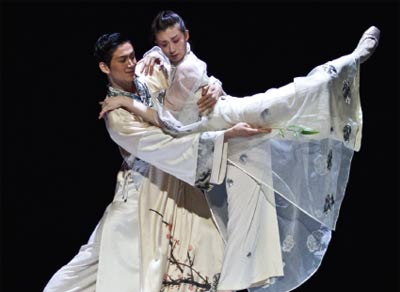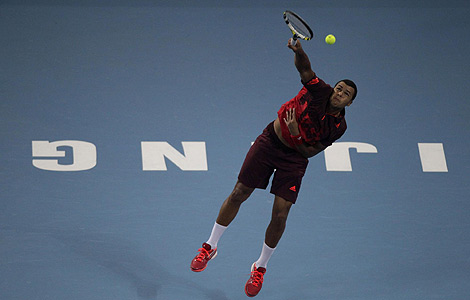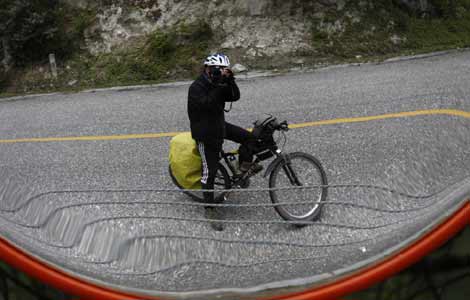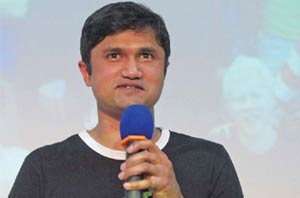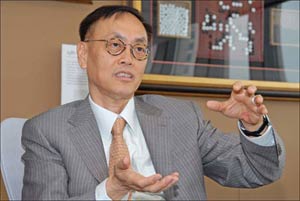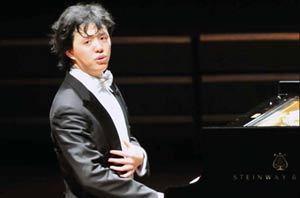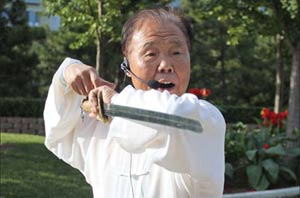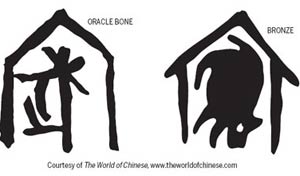Aiming high
Updated: 2011-10-10 07:59
By Chen Nan (China Daily)
|
|||||||||
|
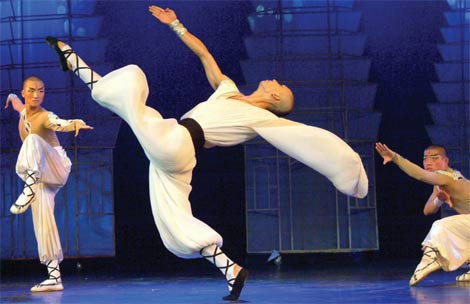 The Legend of Kungfu, combining kungfu with acrobatics, has been viewed by 2 million people around the world since its premiere in 2004. [Provided to China Daily] |
Chinese artist Li Yugang's world tour of Four Beauties of Ancient China kicked off on Oct 3 and will take a slice of the nations' iconic operatic tradition - Peking Opera - to audiences in Japan, the United States, Austria and Britain.
Li first performed abroad in 2008 when he sang solo at the Sydney Opera House to a crowd of more than 2,000. He will return to Australia in early 2012 to present his cross-dressing interpretation of China's four ancient beauties in a show that combines traditional opera and its elaborate costumes, with pop music and grand stage design.
At a time when China hungers for the latest information from the West, Li's success shows the growing interest in the West in the nation's rich, 5,000-year history.
Even as the 33-year-old launches his world tour, Chinese singer Sa Dingding has just wrapped up her 12-nation tour across Europe, the US and Asia. Like Li, the 30-year-old vocalist, winner of the 2008 BBC World Music Award for her album Alive, has impressed foreign audiences with her versatility. She sings in not just Tibetan, Sanskrit, and Mandarin, but also in a language that is her own creation.
Sa dazzled the audience at the Royal Albert Hall in the United Kingdom in 2008, with her exotic costumes and the use of musical instruments from China's ethnic groups. She holds nearly 100 performances around the world every year.
Meanwhile, The Legend of Kungfu, a martial arts production by China Heaven Creation Theater Company, has been performed nearly 5,000 times at home and abroad, attracting more than 2 million people, since its premiere in July 2004.
The company bought the White House Theater in Branson, Missouri, US, at the end of 2009, to facilitate the show's regular performance, in July 2010.
"Like Peking Opera, martial arts have long been one of China's important cultural exports. The show combines kungfu with acrobatics, another traditional art form, making The Legend of Kungfu unique," says Cao Xiaoning, CEO of China Heaven Creation Theater Company. "Foreigners are interested in a culture that is so different from theirs."
Cao says the show was an instant success when it toured North America in August 2005. The five-month tour, which pulled in more than 100,000 people, brought the company $3 million in revenue.
According to the Ministry of Culture, the nation has opened nine government-supported culture centers in countries like Japan, France, Germany and South Korea. More are in the pipeline and will showcase China's martial arts, language and dance.
During the Edinburgh Festival 2011, an audience of 2,000 sat in rapt attention at a two-hour ballet show, The Peony Pavilion. A National Ballet of China production, it tells a 400-year-old love story written by Tang Xianzu of the Ming Dynasty (1368-1644).
It is based on the epic Kunqu Opera of the same title, and was produced by Zhao Ruheng, former artistic director of the National Ballet, and choreographed by Fei Bo, in 2008. The bold adaptation of an age-old opera into a modern ballet won much acclaim, including from Cindy Sughrue, Scottish Ballet's chief executive/executive producer, who called it "fusion ballet".
"The blending of Western classical ballet, classical symphony orchestra and traditional Chinese instruments and characters from Kunqu Opera is such great art," Sughrue said after watching the show.
Considering that ballet first arrived in China in the 1950s from the former Soviet Union and is still a young art form in the country, it was a pioneering move by the National Ballet.
"The show is a successful example of China's forays into mainstream Western culture," says Zhao Shaohua, vice-minister of culture.
She says cultural exchange programs and cooperation with foreign companies are other effective ways to introduce Chinese culture to foreigners.
Statistics from the Ministry of Culture show that cultural exports accounted for $14.39 billion in 2010. Of this, movies generated $549 million at the box office and online games, $230 million.
Ye Xiaowen, vice-president of the Central Institute of Socialism and former director of State Administration of Religious Affairs, says that with the country's economic boom, products made in China are being sold all over the world, and now the country needs to revive its culture influence.
"We suffer from a severe trade deficit in cultural communication between the East and West. China should 'go global'.
"Harmony is one of the most important elements of traditional Chinese culture. This is a culture that can be well received by the world."
|
|
